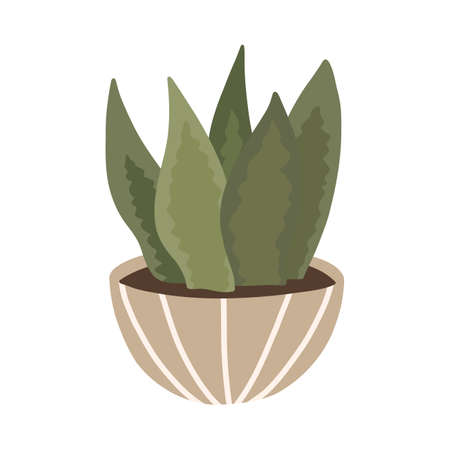1. Why Low-Maintenance Plants Are Ideal for Beginners
Starting your indoor plant journey can be exciting, but it can also feel overwhelming—especially if you’ve never taken care of a plant before. That’s why low-maintenance houseplants are the perfect choice for first-time plant parents. These beginner-friendly plants don’t need constant attention, making them a great way to build confidence while enjoying the many benefits of greenery at home.
Less Stress, More Joy
One of the biggest advantages of easy-care plants is that they help reduce stress instead of adding to it. You won’t have to worry about daily watering schedules or complicated lighting needs. With the right plant, you can simply enjoy the process of watching it grow without feeling overwhelmed.
Perfect for Busy Lifestyles
If you’re juggling work, family, or school, low-maintenance plants fit right into your lifestyle. They thrive on minimal care and can survive occasional forgetfulness, making them ideal for anyone who might not have a lot of time to dedicate to plant care.
Beginner Benefits at a Glance
| Benefit | Description |
|---|---|
| Time-Saving | No need for daily maintenance or special tools. |
| Stress-Reducing | Easy plants mean fewer worries about keeping them alive. |
| Budget-Friendly | Low-maintenance varieties are often affordable and long-lasting. |
| Confidence-Building | Success with simple plants encourages trying more challenging ones later. |
A Great Way to Green Up Your Space
You don’t need a green thumb to enjoy the beauty and benefits of houseplants. Starting with low-maintenance options allows you to bring life into your space without turning it into a full-time job. It’s all about keeping things simple and fun as you grow your indoor garden skills.
2. Top Easy-Care Houseplants for Every Home
If youre just starting your plant parent journey, its best to begin with houseplants that are forgiving and easy to care for. Some plants can thrive even if you forget to water them now and then or if your home doesnt get a lot of natural light. Here are a few top picks that are perfect for beginners and work well in different indoor environments.
Pothos (Epipremnum aureum)
Pothos is often called the “beginner’s best friend” because it’s nearly impossible to kill. With its trailing vines and heart-shaped leaves, it looks great on shelves or hanging planters. It can grow in low to bright indirect light and only needs watering when the soil feels dry.
Care Tips:
- Light: Low to bright indirect light
- Water: Once the top inch of soil is dry
- Pet Friendly: No – keep away from pets
Snake Plant (Sansevieria)
The snake plant, also known as mother-in-law’s tongue, is famous for surviving just about anything. Its tall, stiff leaves add a modern touch to any room. This plant doesn’t mind low light and only needs watering every couple of weeks.
Care Tips:
- Light: Low to bright indirect light
- Water: Every 2–3 weeks, let soil dry out completely
- Pet Friendly: No – mildly toxic if ingested
ZZ Plant (Zamioculcas zamiifolia)
The ZZ plant is a low-maintenance superstar with glossy green leaves that reflect light beautifully. Its drought-tolerant and can handle dark corners, making it ideal for apartments or offices with minimal sunlight.
Care Tips:
- Light: Low to medium indirect light
- Water: Every 2–3 weeks; allow soil to dry between waterings
- Pet Friendly: No – toxic to pets if chewed or eaten
Quick Comparison Table
| Plant Name | Light Needs | Watering Frequency | Pet Friendly? |
|---|---|---|---|
| Pothos | Low to bright indirect | When top inch of soil is dry | No |
| Snake Plant | Low to bright indirect | Every 2–3 weeks | No |
| ZZ Plant | Low to medium indirect | Every 2–3 weeks | No |
These houseplants not only bring life and color into your space but also help purify the air. As a new plant parent, choosing any of these will set you up for success without adding stress to your routine.
![]()
3. Light, Water, and Other Basic Needs
If youre just getting started with houseplants, don’t worry—you don’t need a green thumb to keep these low-maintenance plants happy. The key is understanding a few basics about light, water, and general care. Below, weve broken it down so you can feel confident without getting overwhelmed.
Light Requirements
Each plant has its own light preference, but these beginner-friendly options thrive in common household lighting. Heres a quick guide:
| Plant | Light Needs | Ideal Placement |
|---|---|---|
| Snake Plant | Low to bright indirect light | Near a north or east-facing window |
| Pothos | Low to medium indirect light | Shelves, hanging baskets, or corners with filtered light |
| Zebra Haworthia | Bright indirect light | A sunny windowsill that doesn’t get harsh afternoon sun |
| Zanzibar Gem (ZZ Plant) | Tolerates low light but prefers bright indirect light | Darker corners or areas away from direct sunlight |
| Sago Palm | Bright indirect to direct sunlight | Nearsouth-facing window with filtered light |
Watering Basics
The biggest mistake new plant parents make is overwatering. These low-maintenance plants prefer to dry out between waterings. Here’s what you need to know:
| Plant | How Often to Water | Caution Tips |
|---|---|---|
| Pothos | Every 1–2 weeks when soil feels dry 1 inch down | Avoid soggy soil—root rot can occur easily. |
| Zebra Haworthia | Every 2–3 weeks; less in winter months | Sensitive to overwatering—better to underwater. |
| Zanzibar Gem (ZZ Plant) | Every 2–3 weeks; wait until soil is completely dry | Tough leaves store water—don’t rush to water. |
| Sago Palm | Every 1–2 weeks in summer; monthly in winter | Loves humidity but hates wet roots—use well-draining soil. |
| Snake Plant | Every 2–3 weeks; even less in cooler months | This plant thrives on neglect—too much water is worse than too little. |
Pots and Soil Tips for Beginners
- Pots with drainage holes: Always use pots with drainage holes to prevent excess water from sitting at the bottom.
- Cactus or succulent mix: For plants like ZZ plants and snake plants, use fast-draining soil like cactus mix.
- Avoid heavy garden soil: It holds too much moisture and can lead to root problems indoors.
- Add pebbles or perlite: This improves airflow and drainage in your potting mix.
Mistakes to Avoid Early On:
- No schedule needed: Check the soil before watering instead of sticking to a strict calendar.
- No fertilizer frenzy: These hardy plants don’t need regular feeding. Once every few months during growing season (spring/summer) is enough.
- Avoid sudden moves: Don’t move your plant around too often—they adjust slowly to lighting changes.
- No need for daily attention: These plants are perfect for busy folks—they actually prefer being left alone most of the time!
The best part about starting with low-maintenance houseplants is that they teach you how to care without pressure. With just a little observation and patience, youll build confidence—and a greener home—in no time.
4. Common Mistakes First-Time Plant Parents Make
Starting your journey with houseplants is exciting, but even low-maintenance plants can struggle if you’re not aware of a few common pitfalls. Whether youre decorating your apartment in the city or adding greenery to your suburban home, knowing what to avoid will help keep your plants happy and healthy.
Overwatering
This is by far the most common mistake new plant parents make. Many beginners assume that more water equals more love, but in reality, most houseplants—especially low-maintenance ones like succulents and snake plants—prefer their soil to dry out between waterings. Too much water can lead to root rot and eventually kill your plant.
Tip:
Before watering, stick your finger about an inch into the soil. If it feels dry, it’s time to water. If its still moist, wait another day or two.
Poor Lighting Placement
Not all houseplants need direct sunlight, but they do need some form of light. Placing a plant in a dark corner without access to natural light is a sure way to stunt its growth or cause it to die off slowly.
Light Needs for Common Low-Maintenance Plants:
| Plant | Ideal Light Conditions |
|---|---|
| Snake Plant | Low to bright indirect light |
| Pothos | Low to medium indirect light |
| ZZ Plant | Low light tolerant; thrives in bright indirect light |
| Aloe Vera | Bright, direct light |
| Spider Plant | Bright, indirect light |
Choosing the Wrong Plant for Your Space
Your environment plays a big role in how well a plant will thrive. Some plants need more humidity (like ferns), while others prefer dry air (like cacti). It’s important to consider factors like natural light availability, humidity levels, and even how often you’re home before choosing a plant.
Quick Guide to Matching Plants With Spaces:
| Room Type | Recommended Plant(s) |
|---|---|
| Bathroom (High Humidity) | Bamboo, Ferns, Peace Lily |
| Living Room (Bright Indirect Light) | Pothos, Snake Plant, Rubber Tree |
| Bedroom (Low Light) | ZZ Plant, Philodendron, Spider Plant |
| Kitchen (Varied Light & Temps) | Aloe Vera, Herbs like Basil or Mint |
Using the Wrong Pot or Soil
Your plant needs proper drainage to thrive. Using pots without drainage holes or soil that retains too much moisture can quickly lead to problems. Always choose well-draining potting mix appropriate for your specific plant type.
Pro Tip:
If your pot doesn’t have a drainage hole, consider using it as a decorative cover pot (“cachepot”) and keep your plant in a plastic nursery pot with holes inside it for easy removal when watering.
Neglecting Routine Care
Even low-maintenance plants need some attention. Dusting leaves occasionally, rotating them for even growth, and checking for pests are all simple tasks that go a long way toward keeping your houseplants vibrant.
Avoiding these common mistakes will set you up for success as a first-time plant parent. With just a little knowledge and care, even the most beginner-friendly plants can brighten up your space for years to come!
5. Where to Find Low-Maintenance Houseplants
If youre ready to start your indoor plant journey, knowing where to shop can make all the difference. Whether you prefer seeing plants in person or browsing from the comfort of your couch, there are plenty of trusted places across the U.S. where you can find healthy, low-maintenance houseplants perfect for beginners.
Local Nurseries and Garden Centers
Visiting a local nursery is a great way to get expert advice and see exactly what you’re buying. Staff members can help guide you to beginner-friendly options and give tips on how to care for them. Plus, supporting local businesses helps your community thrive.
Benefits of Shopping Local:
- You can inspect the plants health before purchasing
- Get personalized care advice
- Support small businesses in your area
Big Box Stores with Garden Sections
Larger retailers like Home Depot, Lowe’s, and even some Walmart locations have garden centers that carry popular low-maintenance houseplants such as pothos, snake plants, and ZZ plants. These stores often offer competitive pricing and seasonal deals.
Online Plant Retailers
If convenience is key, online shops are a great option. Many websites offer delivery services and detailed care instructions with each plant. Here are some trusted online retailers:
| Retailer | Description |
|---|---|
| The Sill | A popular site offering stylish pots and easy-care plants shipped nationwide. |
| Bloomscape | Sends fully grown plants directly from greenhouse to your door with detailed care plans. |
| Lively Root | Sustainable shipping options and a wide selection of pet-safe, beginner-friendly plants. |
Tips for Online Plant Shopping:
- Check customer reviews before buying
- Look for retailers that offer guarantees or return policies
- Select plants labeled as “low-light” or “easy care” if you’re just starting out
No matter where you shop—locally or online—the key is to choose healthy plants suited to your space and lifestyle. With so many convenient options available, finding the right low-maintenance houseplant has never been easier.


